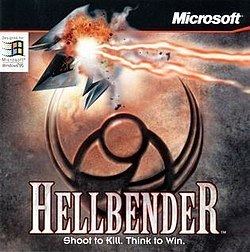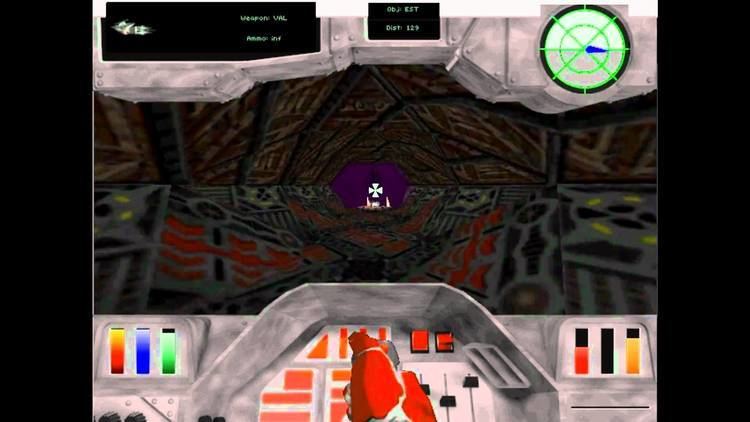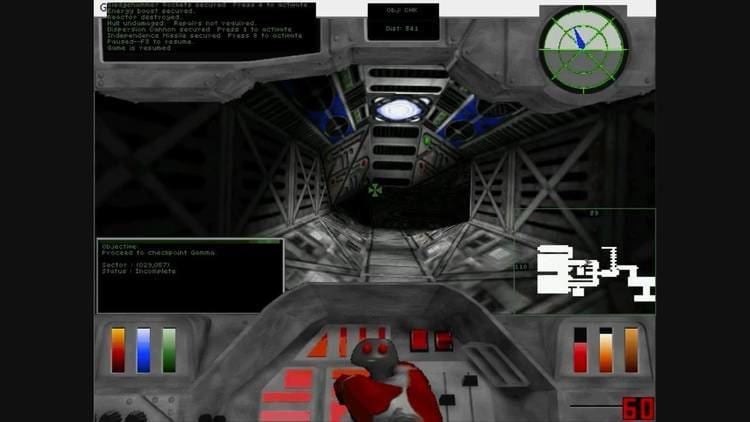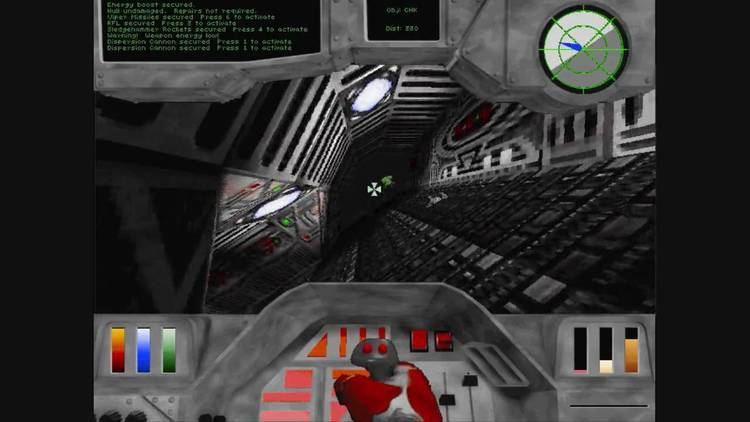Composer(s) Kyle Richards Initial release date 31 August 1996 Genre Simulation game Platform Microsoft Windows | Release date(s) NA: August 31, 1996 Programmer Mark Randel | |
 | ||
Producer(s) Mark RandelJoseph Selinske Mode(s) Single player, Multiplayer Publishers Microsoft Corporation, Microsoft Studios Similar Terminal Reality games, Flight simulators, Other games | ||
Hellbender is a simulation video game developed by Terminal Reality and published by Microsoft Game Studios for Windows 95. It is the sequel to Fury3. A demo version of the game was included on later CD-ROM versions of Windows 95. The voice of the ship's computer was portrayed by Gillian Anderson, who is best known from the TV series, The X-Files.
Contents

Gameplay

The player is in control of a prototype spacecraft (the "Hellbender") and must fly it around a map, destroying various targets and reaching checkpoints. There are ten weapons available, corresponding to the numerals 1-0 on a qwerty keyboard. The Valkyrie and Laser cannons have unlimited ammo, but there are also dumbfire Sledgehammer rockets, homing Viper missiles, and devastating Doomsday mines. Many more weapons are available by collecting power-ups during gameplay.

The levels in Hellbender are composed of a few missions that take place on eight different planets. There are typically three missions per planet.
Plot

Six years after the events depicted in Fury3, the Bions (an alien race created by Earth scientists which rebelled and became ruthless killing machines) kill all the Coalition's qualified pilots on Sebek. The player's character ("the Councilor") is the last surviving pilot for the Coalition of Independent Planets, the defense group that protects Earth from the Bions. The Bions are now targeting the rest of the Coalition's citizens. The pilot must accomplish various objectives on eight different worlds in order to stop the Bions, save Earth, and win the game. The storyline is a continuation of the storyline from Fury3.
